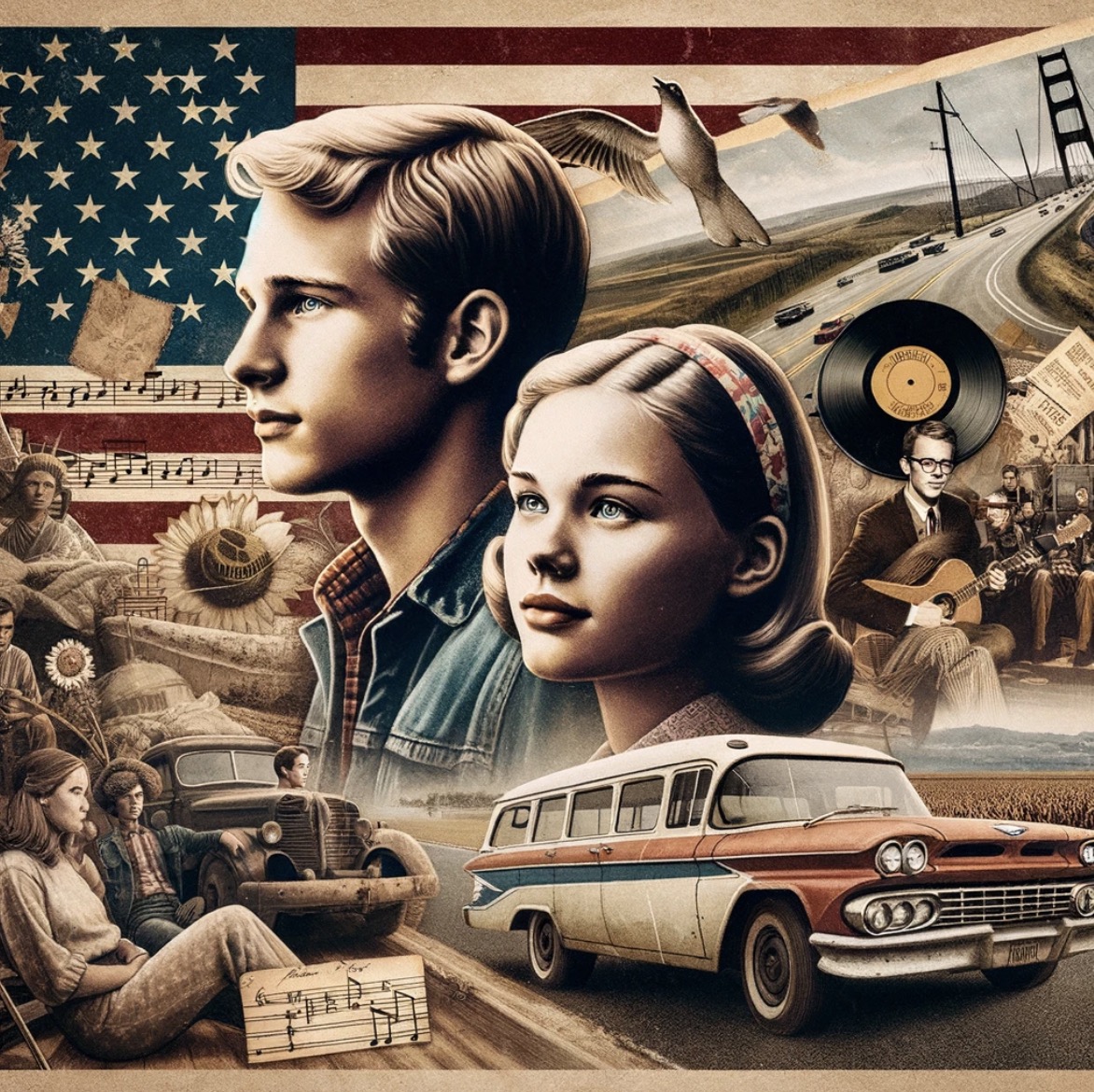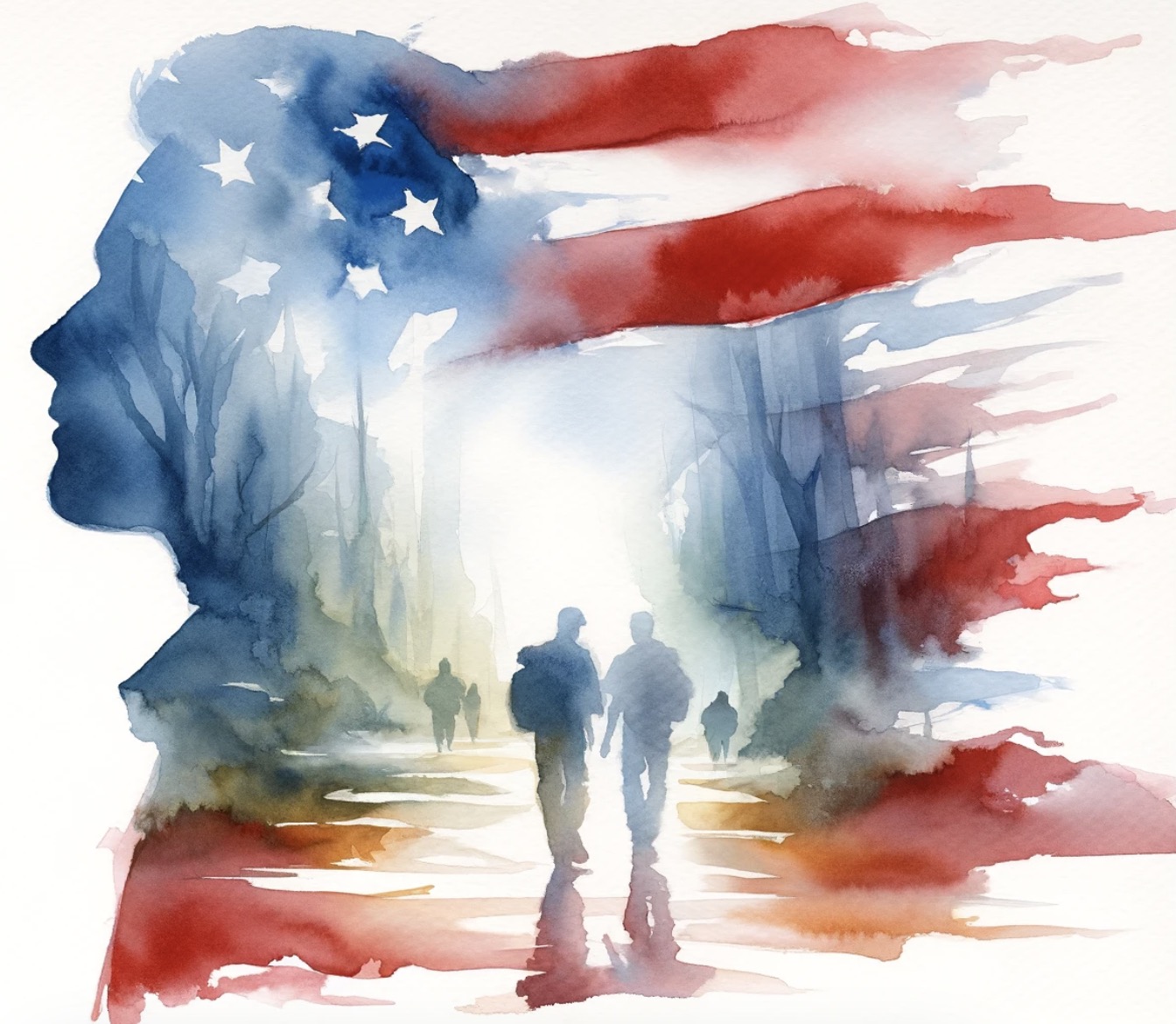Simon & Garfunkel, a duo known for their harmonious blend of folk and rock, have left an indelible mark on the music world. Among their rich catalog of songs, “America” stands out as a poignant and reflective piece. Released in 1968, this song captures a unique blend of personal journey and societal commentary, making it a timeless piece of art.
Meaning of “America”
“America” is more than just a road trip song; it’s a deep dive into the psyche of a nation and its people. Here are some key aspects:
- Search for Identity and Purpose: The song reflects a journey, both literal and metaphorical, through the American landscape. It’s about young people seeking meaning and purpose in a changing world.
- Social and Political Commentary: Set against the backdrop of the 1960s, a time of great social and political upheaval, the song subtly addresses the restlessness and disillusionment felt by many.
- Personal Connection and Universal Appeal: While it narrates a personal story, its themes of exploration, hope, and disappointment resonate universally.
- Contrast between Idealism and Reality: The song juxtaposes the idealistic view of America with the stark reality encountered by the protagonists.
Background and Societal Context
“America” was written by Paul Simon during a period of significant social and political upheaval in the United States. The late 1960s was a time of great unrest, with the Civil Rights Movement, the Vietnam War, and the counterculture movement all shaping the cultural landscape. Against this backdrop, Simon’s introspective and nostalgic lyrics captured the zeitgeist of the era, expressing a yearning for personal and societal connection amidst the chaos and division.

The song follows the journey of a young couple, loosely based on Simon and his then-girlfriend Kathy Chitty, as they travel across the country in search of meaning and purpose. The narrative unfolds as a series of vignettes, capturing the essence of the American landscape and the existential questions that arise during a period of transition and self-discovery.
Trivia and Artist’s Relationship with the Song
- Inspiration from a Road Trip: Paul Simon was inspired by a five-day road trip he took with his then-girlfriend Kathy Chitty.
- Reflection of Personal and Societal Journey: The song mirrors Simon’s personal explorations and the broader quest of a generation seeking purpose.
- A Standout Track in Their Album: Featured in their album “Bookends,” “America” represents a pivotal moment in Simon & Garfunkel’s career, showcasing their evolving artistry.
Interpreting Key Lyrics
- “Let us be lovers, we’ll marry our fortunes together”: Symbolizes the union of dreams and the start of a shared journey.
- “Counting the cars on the New Jersey Turnpike”: This line paints a vivid picture of the mundane, contrasting with the grandeur of their quest.
- “They’ve all come to look for America”: Reflects the collective search for identity and meaning in a rapidly changing society.
The opening lines of “America” immediately set the tone for the song, as Simon sings, “Let us be lovers, we’ll marry our fortunes together.” This sense of unity and shared destiny is a recurring theme throughout the song, reflecting the desire for connection and companionship in the face of uncertainty.
As the couple embarks on their journey, they encounter moments of disillusionment and doubt, captured in lines such as “Laughing on the bus, playing games with the faces / She said the man in the gabardine suit was a spy.” These lyrics convey a sense of alienation and distrust, reflecting the pervasive atmosphere of paranoia and disillusionment during the era.
However, amidst the uncertainty, the song also exudes a sense of hope and longing for a brighter future. The chorus, with its repeated refrain of “Kathy, I’m lost, I said, though I knew she was sleeping / I’m empty and aching and I don’t know why,” encapsulates the internal turmoil and existential quest for meaning that resonated with a generation grappling with their place in the world.

The song reaches its emotional crescendo as the couple arrives in Michigan, where they are met with a sense of disillusionment and the realization that their idealistic dreams may not align with reality. This moment of reckoning serves as a poignant reflection on the complexities of personal and societal transformation, offering a bittersweet conclusion to the couple’s journey.
Artist’s Intentions: “Through the Lens of Simon & Garfunkel”
Paul Simon, in various interviews, has shed light on “America.” He often speaks about the song as a reflection of his own experiences and the zeitgeist of the 1960s. He wanted to capture the essence of a generation’s search for something more, something quintessentially American yet elusive.
Speaking about the writing process, he has discussed how the song emerged from his own experiences of traveling across the country and the deep sense of longing and introspection that accompanied those journeys. Simon’s introspective songwriting style and his ability to capture universal emotions through specific, evocative imagery have undoubtedly contributed to the enduring appeal of “America.”

In a 2016 interview with NPR, Simon reflected on the song’s enduring legacy, stating, “The song is about wondering what’s coming next… it’s about looking out, seeing the road, our lives and that yearning for the future. It’s about the search for something more, something better.” This sentiment underscores the universal nature of the song’s themes and the timeless relevance of its message, which continues to resonate with audiences across generations.
Legacy and Impact:
“America” has left an indelible mark on the music industry, influencing countless artists and captivating audiences with its timeless appeal. The song’s enduring popularity has been reflected in its inclusion in numerous film soundtracks, television shows, and advertisements, further cementing its status as a cultural touchstone.
Beyond its commercial success, “America” has also served as a source of inspiration for musicians across genres, with artists such as David Bowie, Neil Diamond, and Yes offering their own interpretations of the song. Its enduring legacy is a testament to the song’s ability to transcend temporal and stylistic boundaries, resonating with audiences across generations.
My Personal Encounter with the Song:
I first encountered “America” during my formative years as a musician, and its impact on me was immediate and profound.
The song’s introspective lyrics and haunting melody spoke to my own sense of wanderlust and yearning for connection, and I found myself drawn to the poignant storytelling and emotional depth of the composition. As I delved deeper into its intricacies, I discovered a wealth of musical nuances and lyrical subtleties that further enriched my appreciation for the song.
Conclusion: The Timeless Appeal of “America”
As we look to the future, it is clear that “America” will continue to hold a special place in the annals of music history. Its timeless themes of longing, introspection, and the search for meaning are as relevant today as they were in the late 1960s, ensuring that the song’s impact will endure for years to come.
In an ever-changing cultural landscape, “America” serves as a poignant reminder of the power of music to capture the human experience and transcend the limitations of time and space. Its enduring legacy is a testament to the enduring power of art to inspire, provoke, and unite audiences in a shared sense of longing and hope.
In the words of Paul Simon, “The song is about wondering what’s coming next… it’s about looking out, seeing the road, our lives and that yearning for the future.” This sentiment encapsulates the timeless relevance of “America” and the enduring impact it continues to have on listeners around the world.
1 thought on “Exploring the Depths of “America” by Simon & Garfunkel”